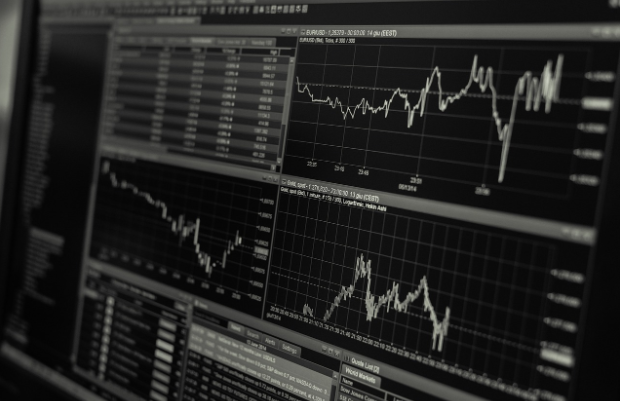Is algorithmic trading really profitable?
Algorithmic trading is a sophisticated financial strategy that involves using computer programs to execute trades at speeds and volumes that are unattainable for human traders. These algorithms follow a set of mathematical models or instructions based on timing, price, quantity, or any mathematical model, leading to efficient and often profitable trading strategies.
One widely implemented approach is trend-following, where algorithms analyze market trends and make trades based on predicted movements. Another is mean reversion, which assumes that prices will revert to their historical average. Forex algorithmic trading strategies are another significant subset, focusing on the currency market's unique characteristics, leveraging the speed and liquidity of forex to capitalize on fluctuations in currency pair prices. These strategies, along with others like arbitrage or market making, form the backbone of algorithmic trading, demonstrating its versatility and adaptability to different market conditions and asset classes. As financial markets continue to evolve, algorithmic trading remains at the forefront, consistently adapting to new technologies and market shifts. Its continuous innovation and complexity make it a central strategy in modern trading, offering insights into the market's future direction and the evolving nature of trading itself.
The Profitability of Algorithmic Trading
Algorithmic trading's profitability isn't a simple matter of success or failure; it's a spectrum influenced by various factors. Success stories dot the landscape, with traders harnessing complex algorithms to capture lucrative opportunities across forex, equities, and futures markets. Yet, for every tale of extraordinary returns, there are cautionary accounts of significant losses, underscoring the inherent risks.
Profitability hinges on multiple elements: the sophistication and adaptability of the algorithm, the trader's ability to manage and mitigate risk, and the capacity to process and analyze large data volumes rapidly. Furthermore, market conditions, transaction costs, and slippage impact the outcomes, necessitating a dynamic approach and continuous strategy refinement. Traders must navigate regulatory environments, technological advancements, and competitive pressures. Ultimately, while algorithmic trading offers the promise of high returns, it demands rigorous discipline, a deep understanding of market mechanisms, and an unwavering commitment to ongoing learning and adaptation.
Pros and Cons of Algorithmic Trading

Algorithmic trading stands out for its speed, precision, and ability to execute trades devoid of emotional bias, offering traders a significant advantage in fast-moving markets. By harnessing vast amounts of data and executing complex strategies within milliseconds, it allows traders to exploit opportunities they would otherwise miss. Moreover, this method reduces the likelihood of human errors and emotional decisions, leading to more disciplined trading.
However, the very complexity that gives algorithmic trading its strength also poses considerable risks. Developing, testing, and implementing these algorithms requires a deep understanding of both financial markets and programming, making it a high barrier to entry for many. Even small errors in code can lead to substantial unintended losses, especially in volatile markets.
Additionally, reliance on technology means that connectivity issues or system failures can result in lost opportunities or unintended trades. As markets evolve, algorithms can become outdated, requiring constant monitoring and modification to remain effective. The competitive nature of trading means that strategies may decrease in effectiveness over time as more traders adopt similar approaches. Despite these risks, for many, the potential rewards of algorithmic trading outweigh the downsides, leading to its growing popularity and ongoing evolution.
Real-world Examples and Case Studies
In the realm of algorithmic trading, success stories often come from hedge funds and proprietary trading firms using sophisticated strategies. For instance, some have consistently outperformed the market by detecting patterns and anomalies. On the other hand, notable failures include instances where algorithms caused flash crashes or massive losses due to tiny errors in code or unforeseen market conditions. These cases emphasize the importance of rigorous testing, risk management, and understanding market nuances, serving as valuable lessons for traders in this automated and complex field.
How to Get Started with Algorithmic Trading
Embarking on algorithmic trading requires a blend of financial acumen, strategic thinking, and technical skills, particularly in programming languages like Python or R. Essential tools include access to historical data for backtesting strategies and computational resources to handle the processing load. Prospective algorithmic traders often start by learning through online courses, participating in forums, and practicing on simulation platforms. Building a network within trading communities can also provide insights and support as you develop and refine your strategies.
Future of Algorithmic Trading
The future of algorithmic trading is poised for continued expansion and sophistication. Trends suggest a greater integration of artificial intelligence and machine learning, enabling more adaptive and intelligent trading systems. The increasing availability of data and advancements in technology are likely to democratize algorithmic trading, making it more accessible to a wider range of traders. However, as algorithms become more prevalent, the competition for efficiency and innovative strategies will intensify. Regulatory, ethical, and market stability considerations will also shape its evolution, as stakeholders navigate the balance between innovation and risk.
Conclusion
Algorithmic trading, with its capacity for high-speed, accurate, and emotion-free trading, offers significant opportunities and challenges. While profitable for many, it demands a deep understanding of market dynamics and robust risk management. Its future, promising increased sophistication with AI and machine learning, suggests a transformative impact on trading strategies and market operations. As traders and regulators adapt to these advancements, algorithmic trading is set to become an even more integral part of the financial landscape.
Top-Tier Trusted Brokers
The table below contains links to 3rd party websites of our top partners from whom we receive compensation at no additional cost to you.

























